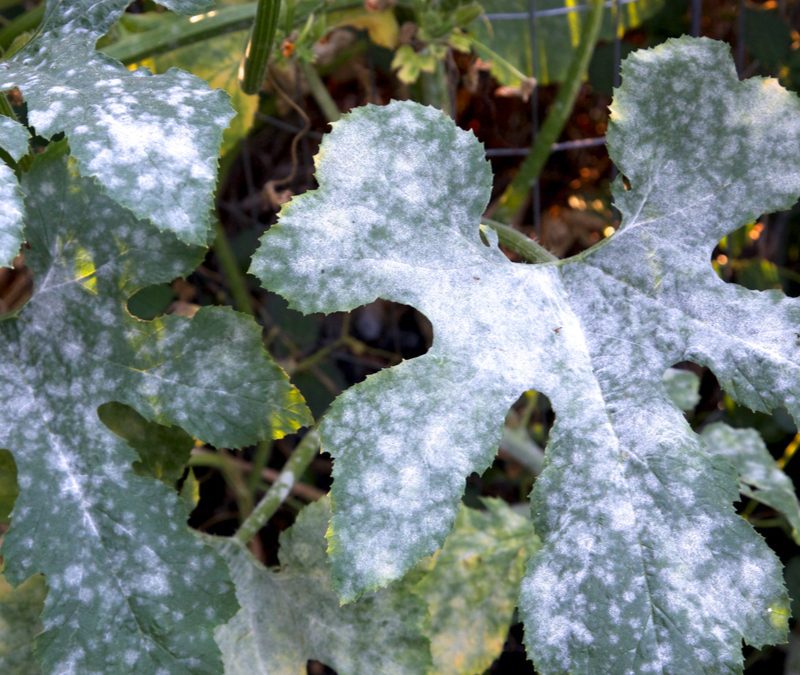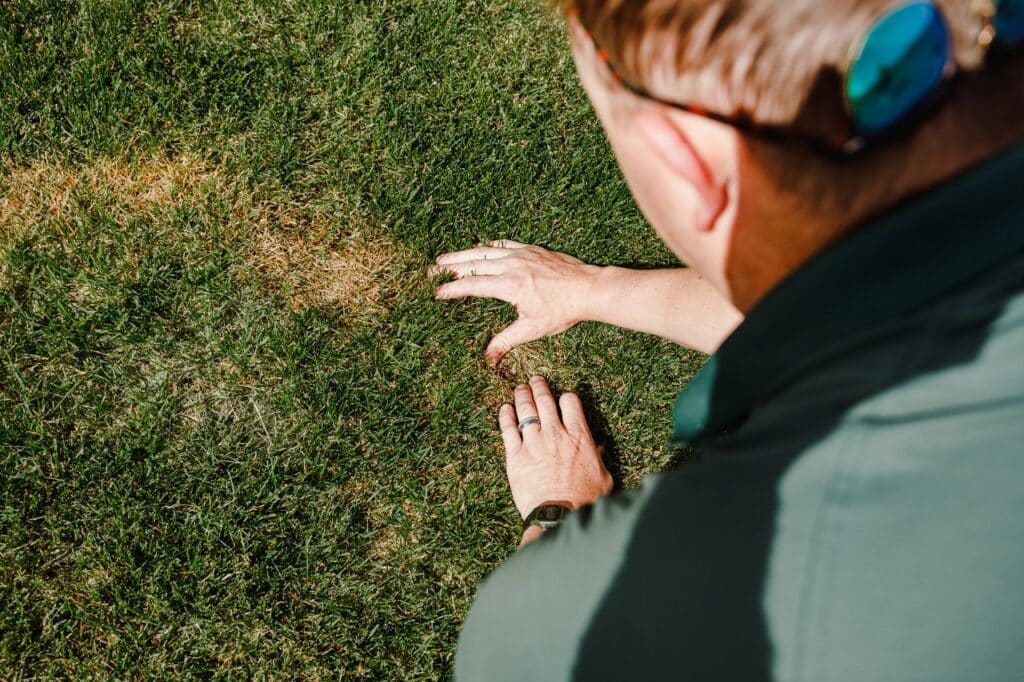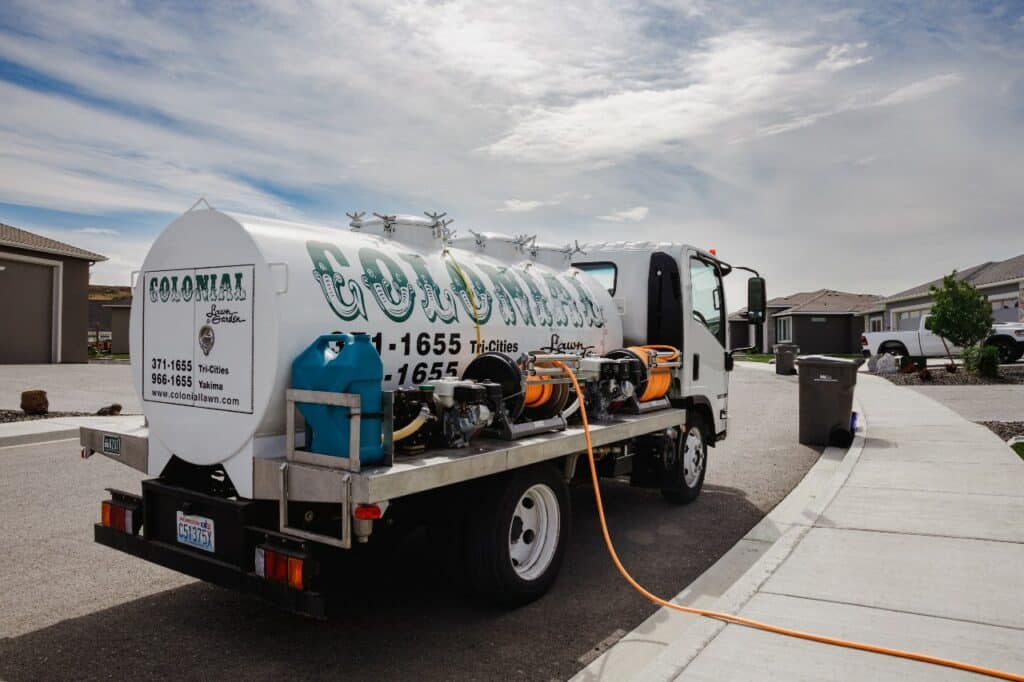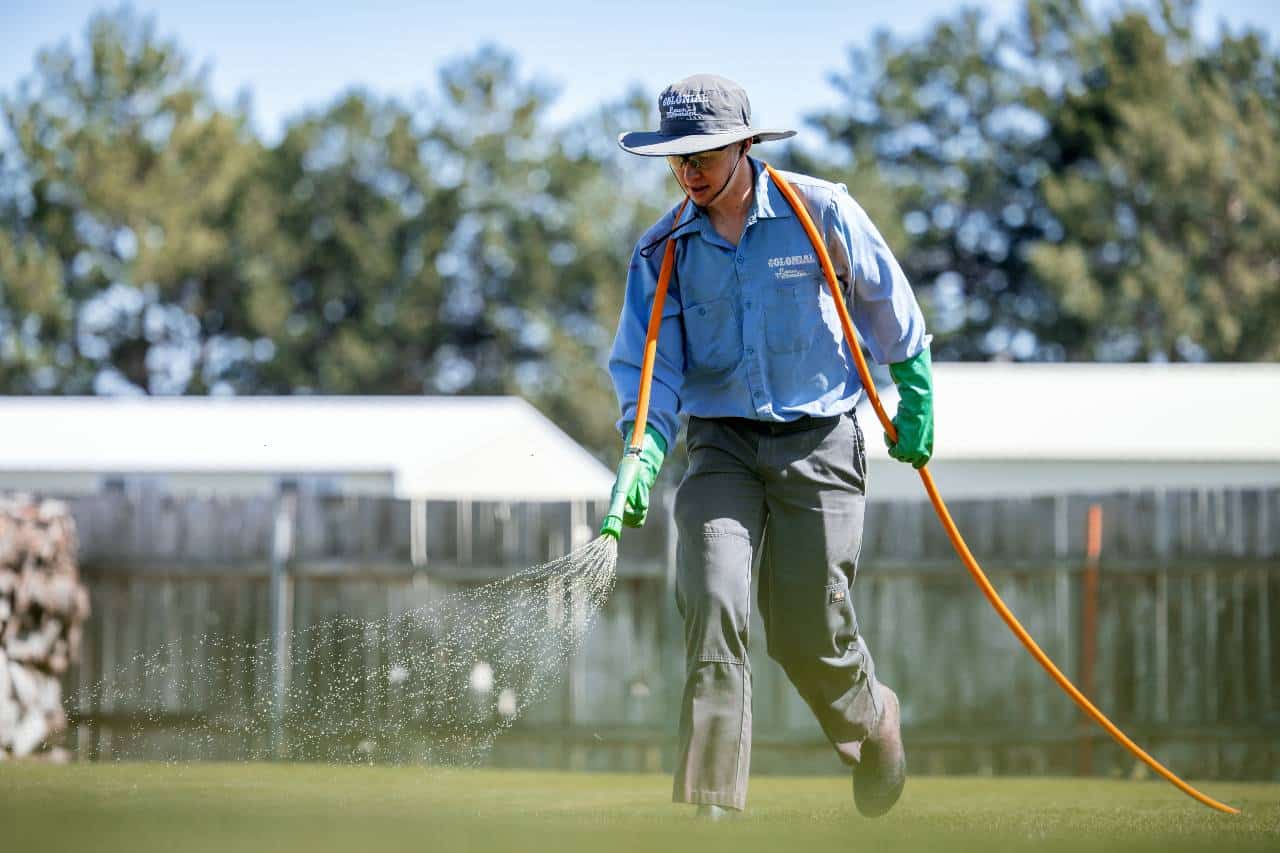
If you’ve tried extra fertilizer and watering and that brown spot in your lawn still isn’t bouncing back, it might not be due to a lack of nutrients or moisture. It could actually be the work of fungal diseases in your lawn. Here are some of the most common lawn fungi we see here in Washington state.
Lawn Fungus Found In Washington
Red Thread
While red thread fungus doesn’t actually damage the turfgrass, it will certainly ruin the appearance of the lush green carpet we all strive for. It does this by creating a vine-like growth that looks like strings of red thread, or antlers, snaking through your grass. Red thread thrives in soil that lacks nutrients, so we may recommend a fertilizer treatment in addition to fungicide treatment.
Necrotic Ring
Necrotic Ring shows up in late summer and creates rings of dead grass. Necrotic ring affects the roots and leaves of the plant, and eradicating it can be challenging since it is perennial. In the early stages of infection, the necrotic ring looks like light green or straw-colored patches. These patches may be several inches to several feet in diameter. They can be localized or widely scattered throughout the lawn. As the disease progresses, grass at the patch dies and becomes matted, while grass inside the ring remains healthy and green, resulting in a doughnut pattern. Patches in shady spots, or areas with thick thatch, typically cause more damage and have a crater-like appearance. If left untreated, necrotic rings can come back the following year, and the rings will get bigger until they merge into large patches of dead turfgrass.
Powdery Mildew

Powdery mildew takes its name from its appearance, which looks as if someone’s spilled baby powder or flour on your grass. It thrives in the shade and will spread rapidly in darker areas of your lawn. When grass becomes infected, the leaves turn yellow and gradually die off. If grass does manage to survive, it will be severely weakened, making it vulnerable to other diseases and pests. Besides fungicide, your lawn care service technician may also recommend aeration. By breaking up the thatch in your lawn, there are fewer shady places for this fungus to grow.
Leaf Rust
Kentucky bluegrass is the most vulnerable to this fungus. It most often occurs in the warmer months when there is excess dew on the lawn. It will appear in your lawn as yellow, orange, red, black, or brown and grows upwards towards the tips of the grass blades. Apart from applying fungicide, it’s advisable to happy a nitrogen fertilizer and mowing your lawn regularly.
Fusarium Patch

The patch of this particular fungus tends to be smaller – about a foot wide at most. It’s found across the state and affects bentgrass, annual bluegrass, and other varieties. It loves cool, moist conditions. It most frequently occurs now through March, so keep a sharp eye out for any changes in your lawn this month. Fusarium creates irregularly shaped orange patches. They typically are small but will spread rapidly. If you take a closer look, you may see white fibers attached to the grass.
How To Get Rid Of Lawn Fungus
Colonial Lawn & Garden has several options for treating lawn fungus. Some fungi could be fixed with fertilizer. As mentioned previously, the red thread is caused by low nitrogen levels. Since nitrogen is a part of fertilizer, it could be that we need to fertilize your turfgrass. The necrotic ring is caused by excess water, so we may inquire about your watering practices and make recommendations from there. One of the most effective ways to treat fungal infections is to prevent them from happening in the first place. Since no two lawns are alike, we’ll learn more about your unique situation and offer any advice we can to keep fungi out of your yard. And if mowing, watering, and fertilizing aren’t enough, we can always use a fungicide treatment. These products are safe to use on your turfgrass and will swiftly eradicate whichever microbes are ruining the appearance of your lawn.

Get Professional Lawn Care Near Yakima
If persistent fungus issues plague your lawn, contact the experts at Colonial Lawn & Garden. Our experts are trained to identify and treat all manner of lawn fungus so you can get back to enjoying a lush green lawn once again. To learn more about our fungicide treatment, or to schedule an appointment, call us at (509) 966-1655 for customers in Yakima or for Richland, call (509) 371-1655. Or you can leave us a message online. Don’t forget to check out our blog page for more articles, and like us on Facebook and Twitter to see photos of our work!





